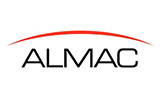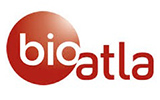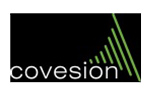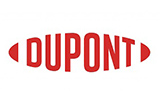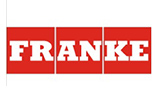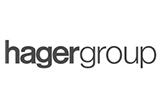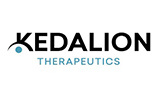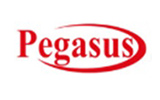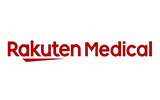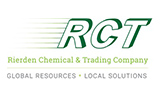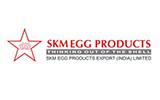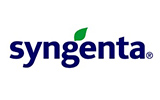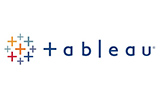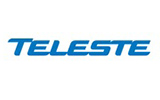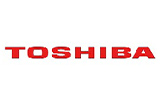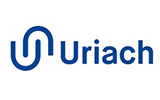1. Research Framework
1.1. Research Objective
1.2. Product Overview
1.3. Market Segmentation
2. Executive Summary
3. Global Positive Material Identification (PMI) Market Insights
3.1. Industry Value Chain Analysis
3.2. DROC Analysis
3.2.1. Growth Drivers
3.2.1.1. Rising Safety Concerns
3.2.1.2. Increasing Complexity in Manufacturing Processes
3.2.1.3. Growing Demand for Quality Control
3.2.2. Restraints
3.2.2.1. High Initial Investment Costs
3.2.2.2. Complex Operation and Training Requirements
3.2.3. Opportunities
3.2.3.1. Advancements in PMI Technology
3.2.3.2. Rising Demand for Traceability and Transparency
3.2.4. Challenges
3.2.4.1. Limited Battery Life in Portable Devices
3.2.4.2. Environmental Factors Affecting Accuracy
3.3. Technological Advancements/Recent Developments
3.4. Regulatory Framework
3.5. Porter's Five Forces Analysis
3.5.1. Bargaining Power of Suppliers
3.5.2. Bargaining Power of Buyers
3.5.3. Threat of New Entrants
3.5.4. Threat of Substitutes
3.5.5. Intensity of Rivalry
4. Global Positive Material Identification (PMI) Market: Marketing Strategies
5. Global Positive Material Identification (PMI) Market Overview
5.1. Market Size & Forecast, 2025-2033
5.1.1. By Value (USD Billion)
5.2. Market Share & Forecast
5.2.1. By Technique
5.2.1.1. X-ray Fluorescence (XRF)
5.2.1.2. Optical Emission Spectroscopy (OES)
5.2.2. By Offering
5.2.2.1. Equipment
5.2.2.2. Services
5.2.3. By Form Factor
5.2.3.1. Portable
5.2.3.2. Benchtop
5.2.3.3. Integrated Systems
5.2.4. By End Use Industry
5.2.4.1. Oil & Gas
5.2.4.2. Automotive
5.2.4.3. Aerospace & Defense
5.2.4.4. Manufacturing
5.2.4.5. Metals & Heavy Machinery
5.2.4.6. Construction
5.2.4.7. Power Generation
5.2.4.8. Pharmaceutical & Food
5.2.4.9. Others
5.2.5. By Region
5.2.5.1. North America
5.2.5.2. Europe
5.2.5.3. Asia Pacific (APAC)
5.2.5.4. Latin America (LATAM)
5.2.5.5. Middle East and Africa (MEA)
6. North America Positive Material Identification (PMI) Market
6.1. Market Size & Forecast, 2025-2033
6.1.1. By Value (USD Billion)
6.2. Market Share & Forecast
6.2.1. By Technique
6.2.2. By Offering
6.2.3. By Form Factor
6.2.4. By End Use Industry
6.2.5. By Country
6.2.5.1. United States
6.2.5.1.1. By Technique
6.2.5.1.2. By Offering
6.2.5.1.3. By Form Factor
6.2.5.1.4. By End Use Industry
6.2.5.2. Canada
6.2.5.2.1. By Technique
6.2.5.2.2. By Offering
6.2.5.2.3. By Form Factor
6.2.5.2.4. By End Use Industry
7. Europe Positive Material Identification (PMI) Market
7.1. Market Size & Forecast, 2025-2033
7.1.1. By Value (USD Billion)
7.2. Market Share & Forecast
7.2.1. By Technique
7.2.2. By Offering
7.2.3. By Form Factor
7.2.4. By End Use Industry
7.2.5. By Country
7.2.5.1. Germany
7.2.5.1.1. By Technique
7.2.5.1.2. By Offering
7.2.5.1.3. By Form Factor
7.2.5.1.4. By End Use Industry
7.2.5.2. United Kingdom
7.2.5.2.1. By Technique
7.2.5.2.2. By Offering
7.2.5.2.3. By Form Factor
7.2.5.2.4. By End Use Industry
7.2.5.3. Italy
7.2.5.3.1. By Technique
7.2.5.3.2. By Offering
7.2.5.3.3. By Form Factor
7.2.5.3.4. By End Use Industry
7.2.5.4. France
7.2.5.4.1. By Technique
7.2.5.4.2. By Offering
7.2.5.4.3. By Form Factor
7.2.5.4.4. By End Use Industry
7.2.5.5. Spain
7.2.5.5.1. By Technique
7.2.5.5.2. By Offering
7.2.5.5.3. By Form Factor
7.2.5.5.4. By End Use Industry
7.2.5.6. Belgium
7.2.5.6.1. By Technique
7.2.5.6.2. By Offering
7.2.5.6.3. By Form Factor
7.2.5.6.4. By End Use Industry
7.2.5.7. Russia
7.2.5.7.1. By Technique
7.2.5.7.2. By Offering
7.2.5.7.3. By Form Factor
7.2.5.7.4. By End Use Industry
7.2.5.8. The Netherlands
7.2.5.8.1. By Technique
7.2.5.8.2. By Offering
7.2.5.8.3. By Form Factor
7.2.5.8.4. By End Use Industry
7.2.5.9. Rest of Europe
7.2.5.9.1. By Technique
7.2.5.9.2. By Offering
7.2.5.9.3. By Form Factor
7.2.5.9.4. By End Use Industry
8. Asia Pacific Positive Material Identification (PMI) Market
8.1. Market Size & Forecast, 2025-2033
8.1.1. By Value (USD Billion)
8.2. Market Share & Forecast
8.2.1. By Technique
8.2.2. By Offering
8.2.3. By Form Factor
8.2.4. By End Use Industry
8.2.5. By Country
8.2.5.1. China
8.2.5.1.1. By Technique
8.2.5.1.2. By Offering
8.2.5.1.3. By Form Factor
8.2.5.1.4. By End Use Industry
8.2.5.2. India
8.2.5.2.1. By Technique
8.2.5.2.2. By Offering
8.2.5.2.3. By Form Factor
8.2.5.2.4. By End Use Industry
8.2.5.3. Japan
8.2.5.3.1. By Technique
8.2.5.3.2. By Offering
8.2.5.3.3. By Form Factor
8.2.5.3.4. By End Use Industry
8.2.5.4. South Korea
8.2.5.4.1. By Technique
8.2.5.4.2. By Offering
8.2.5.4.3. By Form Factor
8.2.5.4.4. By End Use Industry
8.2.5.5. Australia & New Zealand
8.2.5.5.1. By Technique
8.2.5.5.2. By Offering
8.2.5.5.3. By Form Factor
8.2.5.5.4. By End Use Industry
8.2.5.6. Indonesia
8.2.5.6.1. By Technique
8.2.5.6.2. By Offering
8.2.5.6.3. By Form Factor
8.2.5.6.4. By End Use Industry
8.2.5.7. Malaysia
8.2.5.7.1. By Technique
8.2.5.7.2. By Offering
8.2.5.7.3. By Form Factor
8.2.5.7.4. By End Use Industry
8.2.5.8. Singapore
8.2.5.8.1. By Technique
8.2.5.8.2. By Offering
8.2.5.8.3. By Form Factor
8.2.5.8.4. By End Use Industry
8.2.5.9. Vietnam
8.2.5.9.1. By Technique
8.2.5.9.2. By Offering
8.2.5.9.3. By Form Factor
8.2.5.9.4. By End Use Industry
8.2.5.10. Rest of APAC
8.2.5.10.1. By Technique
8.2.5.10.2. By Offering
8.2.5.10.3. By Form Factor
8.2.5.10.4. By End Use Industry
9. Latin America Positive Material Identification (PMI) Market
9.1. Market Size & Forecast, 2025-2033
9.1.1. By Value (USD Billion)
9.2. Market Share & Forecast
9.2.1. By Technique
9.2.2. By Offering
9.2.3. By Form Factor
9.2.4. By End Use Industry
9.2.5. By Country
9.2.5.1. Brazil
9.2.5.1.1. By Technique
9.2.5.1.2. By Offering
9.2.5.1.3. By Form Factor
9.2.5.1.4. By End Use Industry
9.2.5.2. Mexico
9.2.5.2.1. By Technique
9.2.5.2.2. By Offering
9.2.5.2.3. By Form Factor
9.2.5.2.4. By End Use Industry
9.2.5.3. Argentina
9.2.5.3.1. By Technique
9.2.5.3.2. By Offering
9.2.5.3.3. By Form Factor
9.2.5.3.4. By End Use Industry
9.2.5.4. Peru
9.2.5.4.1. By Technique
9.2.5.4.2. By Offering
9.2.5.4.3. By Form Factor
9.2.5.4.4. By End Use Industry
9.2.5.5. Rest of LATAM
9.2.5.5.1. By Technique
9.2.5.5.2. By Offering
9.2.5.5.3. By Form Factor
9.2.5.5.4. By End Use Industry
10. Middle East and Africa Positive Material Identification (PMI) Market
10.1. Market Size & Forecast, 2025-2033
10.1.1. By Value (USD Billion)
10.2. Market Share & Forecast
10.2.1. By Technique
10.2.2. By Offering
10.2.3. By Form Factor
10.2.4. By End Use Industry
10.2.5. By Country
10.2.5.1. Saudi Arabia
10.2.5.1.1. By Technique
10.2.5.1.2. By Offering
10.2.5.1.3. By Form Factor
10.2.5.1.4. By End Use Industry
10.2.5.2. UAE
10.2.5.2.1. By Technique
10.2.5.2.2. By Offering
10.2.5.2.3. By Form Factor
10.2.5.2.4. By End Use Industry
10.2.5.3. Qatar
10.2.5.3.1. By Technique
10.2.5.3.2. By Offering
10.2.5.3.3. By Form Factor
10.2.5.3.4. By End Use Industry
10.2.5.4. Kuwait
10.2.5.4.1. By Technique
10.2.5.4.2. By Offering
10.2.5.4.3. By Form Factor
10.2.5.4.4. By End Use Industry
10.2.5.5. South Africa
10.2.5.5.1. By Technique
10.2.5.5.2. By Offering
10.2.5.5.3. By Form Factor
10.2.5.5.4. By End Use Industry
10.2.5.6. Nigeria
10.2.5.6.1. By Technique
10.2.5.6.2. By Offering
10.2.5.6.3. By Form Factor
10.2.5.6.4. By End Use Industry
10.2.5.7. Algeria
10.2.5.7.1. By Technique
10.2.5.7.2. By Offering
10.2.5.7.3. By Form Factor
10.2.5.7.4. By End Use Industry
10.2.5.8. Rest of MEA
10.2.5.8.1. By Technique
10.2.5.8.2. By Offering
10.2.5.8.3. By Form Factor
10.2.5.8.4. By End Use Industry
11. Competitive Landscape
11.1. List of Key Players and Their Products
11.2. Global Positive Material Identification Company Market Share Analysis, 2023
11.3. Competitive Benchmarking, By Operating Parameters
11.4. Key Strategic Developments (Mergers, Acquisitions, Partnerships, etc.)
12. Impact of Escalating Geopolitical Tension on Global Positive Material Identification (PMI) Market
13. Company Profiles (Company Overview, Financial Matrix, Competitive Landscape, Key Personnel, Key Competitors, Contact Address, Strategic Outlook, and SWOT Analysis)
13.1. Olympus
13.2. Hitachi High-Technologies
13.3. Thermo Fisher Scientific
13.4. Ametek
13.5. Bruker
13.6. Shimadzu
13.7. Innov-X Systems
13.8. Skyray Instrument
13.9. SPECTRO Analytical Instruments
13.10. Oxford Instruments
13.11. Rigaku
13.12. Other Prominent Players
14. Key Strategic Recommendations
15. Research Methodology
15.1. Qualitative Research
15.1.1. Primary & Secondary Research
15.2. Quantitative Research
15.3. Market Breakdown & Data Triangulation
15.3.1. Secondary Research
15.3.2. Primary Research
15.4. Breakdown of Primary Research Respondents, By Region
15.5. Assumptions & Limitations
*Financial information of non-listed companies can be provided as per availability.
**The segmentation and the companies are subject to modifications based on in-depth secondary research for the final deliverable


